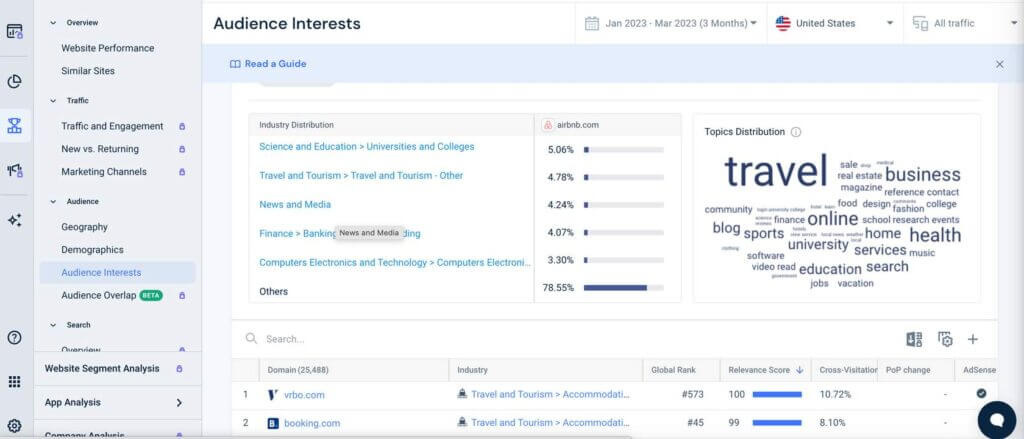Introduction
Content marketing is a strategic approach that goes beyond direct promotion. It involves creating and sharing valuable, relevant, consistent content to attract and engage a specific audience. The goal is to provide the audience with valuable information, entertainment, or education to build trust, establish brand authority, and cultivate long-term customer relationships. This approach also helps drive organic traffic to a website or application, reinforcing its value.
Content marketing takes various forms, including blog posts, articles, videos, podcasts, infographics, and social media posts. The content is tailored to address the target audience’s needs, interests, and pain points and has the potential to drive profitable customer action. By delivering valuable content, businesses can attract and retain a loyal audience, ultimately leading to profitable customer action.
Identify and Research your Target Audience
Determine your target audience, ask yourself:
- What are my audience demographics? Start with the basics, such as age, gender, income, and geographic location.
- What are my audiences’ online behaviors? For instance, what social media platforms do they use most often? What businesses do they follow, and how do they use the information they find?
- What are their interests? What trends are likely to affect them and their habits?
- What do you know about their lifestyle? For example, what is their life stage? What challenges do they face?
Quantitative research involves gathering data, which can be obtained from sources such as surveys, website analytics, CRM, e-commerce stores, and third-party sites. By analyzing statistics from clients and target markets, you can segment audiences, predict trends, and gain insights to make informed business decisions.
Qualitative research, on the other hand, involves understanding the opinions and motivations of the target market. This can be done through in-depth interviews, focus groups, and other formats. Insights from qualitative research help uncover people’s challenges, opinions, and motivations. It also provides an opportunity to connect with customers personally and ask follow-up questions to understand who they are truly.
Customer analysis is an ongoing process; there will always be more to learn.
- TikTok Audience Insights: TikTok offers an easy-to-use audience insights tool to explore your audience.
- Facebook Audience Insights: Facebook Audience Insights is a tool that allows you to get detailed information about your target audience. You can use it to gather demographics, interests, behaviors, and more data. This tool can also help you find new audiences that are similar to your current ones
- X Analytics: Using X analytics dashboards, companies can learn about audience demographics and interests.
- Instagram Insights: Instagram provides insights for business accounts, which includes data on reach, engagement, and follower demographics. It also offers insights into the performance of individual posts, stories, and IGTV videos.
- LinkedIn Analytics: LinkedIn offers a built-in analytics tool that provides data on page views, engagement, follower demographics, and the performance of sponsored content and campaigns.
- YouTube Analytics: YouTube provides detailed analytics for video creators, including data on views, watch time, engagement, and demographics of the audience. It also offers insights into the performance of ads and the revenue generated from them.
- Pinterest Analytics: Pinterest offers an analytics tool that provides data on impressions, saves, clicks, and engagement. It also allows businesses to track the performance of promoted pins and campaigns.
- WeChat Mini Program Analytics: WeChat Mini Programs analytics tools can help businesses understand their users and optimize their Mini Programs
Tools such as Google Analytics, Similarweb, or Semrush can enhance your understanding of website visitors, competitors, and social media audiences.

Set Goals.
S.M.A.R.T. goals for content marketing are essential for measuring the success of your marketing efforts. SMART stands for Specific, Measurable, Achievable, Relevant, and Time-bound.
- Specific: Your goals should be clear and specific. For example, a goal to increase your subscribers by 10% within the next three months
- Measurable: Your goals should be measurable so that you can track your progress and determine if you are on track to meet your objectives.
- Achievable: Your goals should be realistic and attainable, considering your available resources and capabilities.
- Relevant: Your goals should apply to your overall business objectives and align with your marketing strategy. For example, if your business aims to increase sales, your content marketing goal could be to increase website traffic from organic search by 25% within the next quarter.
- Time-bound: Your goals should have a specific timeframe for completion. This will help you stay focused and accountable for achieving your objectives.
Marketing Funnel

TOFU: top of the funnel. In this stage of the buying process, a company wants to create awareness and introduce the brand to the customer.
MOFU: middle of the funnel. In this stage, the objective is to foster and direct leads toward becoming qualified customers, emphasizing expanding their interest and enhancing their understanding of your product’s value.
BOFU: The primary goal of the bottom of the funnel is to convert potential customers into actual customers.
Top of the Funnel
At the top of the Funnel, potential customers are first becoming aware of your brand or product. They may be experiencing a problem or need but have yet to look for a solution actively. TOF marketing is an essential part of the overall marketing funnel, as it helps to generate new leads and move them into the middle of the Funnel. However, it’s important to note that TOF marketing is not just about generating leads. It’s also about educating potential customers about your brand and its value proposition. Doing so can build trust and position yourself as the go-to solution for their needs.
TOF Content Marketing
- Blog Posts: Informative articles made to attract customers by sharing valuable content and making the brand trustworthy, designed to show up on search engines.
- Attractive content: Graphics, calculators,
- E-books: detailed content that gives valuable knowledge and answers, provided in exchange for contact details to keep in touch with potential customers.
- Webinars & Podcasts: Interesting audio and video content displaying expertise, building trust, and finding potential customers
- Videos: Short, exciting videos that create an emotional connection, spark interest, and reach more people for the brand.
- Influencer Content: Leverage influencers to help you create high-quality content.
Middle of the Funnel
MOFU is the stage in the marketing funnel where potential customers have moved beyond the initial awareness stage and are now seriously considering your product or service. They seek more detailed information about your offering, including features, benefits, pricing, and customer reviews.MOFU marketing aims to nurture these leads and move them closer to the bottom of the Funnel (BOFU), where they are ready to purchase.
MOF Content Marketing
- Case studies are real-world examples of how your product or service has helped other customers. They can be a powerful way to demonstrate the value of your offering and build trust with potential customers.
- FAQS: Good FAQ pages are built to answer essential questions and convince customers.
- Webinars: Webinars are a great way to provide in-depth information about your product or service to a large audience. They can also answer questions and address concerns.
- Reviews and testimonials: reading unbiased reviews and testimonials can persuade users to buy from you.
- Ebooks, templates, and white papers: Ebooks, templates, and white papers are longer-form content pieces that provide detailed information on a specific topic. They can be a great way to educate potential customers about your product or service and establish yourself as an expert.
- Free trials and demos: Free trials and demos allow potential customers to try your product or service before they buy it. This is a great way to reduce risk and enable potential customers to experience the benefits of your offering firsthand.
- Personalized email campaigns: segment your target audience and send them relevant email campaigns to encourage them to buy your product.
- Product comparison: Content comparing products or services, helping leads to convert
- Online classes: Teach users about your products/ services in free courses and videos.
- Interactive Content: Use tools like quizzes, calculators, or assessments to engage leads and provide personalized recommendations.
- Limited-time Offers: Create a sense of urgency with discounts or bonuses available for a limited period.
- Engage with Chatbots or Live Chat: Immediate response can make a difference in conversion. Use AI-powered chatbots or live chat features to answer questions and engage with visitors in real time.
- Personalized Recommendations: Use data and analytics to provide leads with tailored content or product recommendations.
- Feedback and Surveys: Ask your audience what they need. This will provide you with insights and show your leads that you value their input.
Bottom of the Funnel
The Bottom of the Funnel represents the stage where leads are very close to making a purchase decision. They’re past the awareness and consideration phases and are now in the decision-making phase. BOFU’s strategies are focused on conversion, reassuring leads, and ensuring they have all the information they need to become loyal paying customers.
BOF Content Marketing
- Success Stories: Detailed narratives of customers who have benefited from the product/service.
- Product Tutorials: Step-by-step guides or videos that showcase how to use a product or service effectively.
- FAQ Videos or Articles: Comprehensively addressing common final-stage questions.
- Behind-the-scenes Content: Showcasing how a product is made or offering insights into company values and culture.
- User-generated Content: Promoting reviews, testimonials, or stories from actual users to provide social proof.
- Webinars: These are deep dives into product features or expert discussions that offer more insight into the product/service’s value.
- Implementation Guides: Detailed content on how to get started or integrate a product/service.
- ROI Calculators or Cost Analysis: Tools or articles that help showcase the financial value or savings of a product/service.
